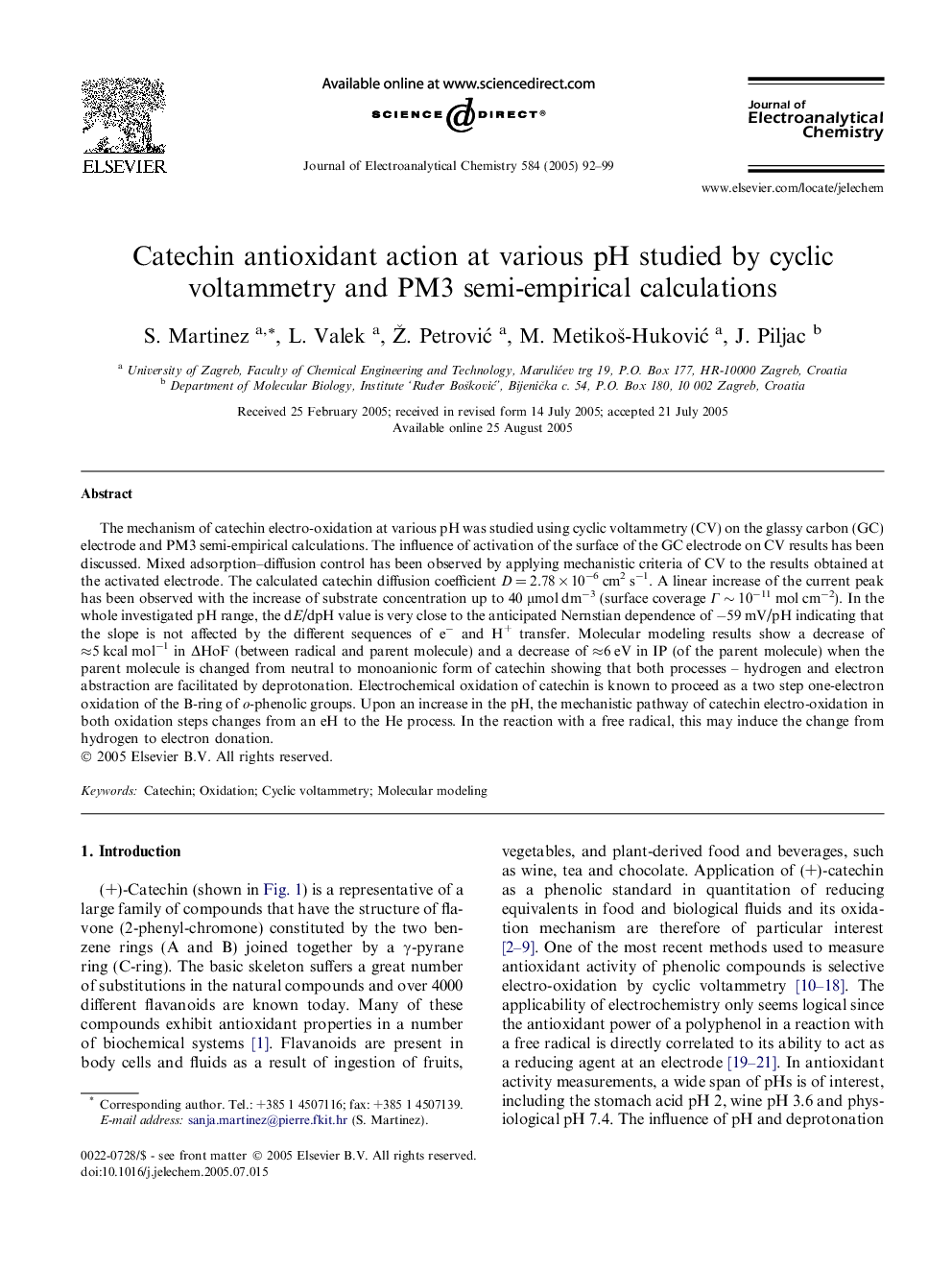| Article ID | Journal | Published Year | Pages | File Type |
|---|---|---|---|---|
| 10275756 | Journal of Electroanalytical Chemistry | 2005 | 8 Pages |
Abstract
The mechanism of catechin electro-oxidation at various pH was studied using cyclic voltammetry (CV) on the glassy carbon (GC) electrode and PM3 semi-empirical calculations. The influence of activation of the surface of the GC electrode on CV results has been discussed. Mixed adsorption-diffusion control has been observed by applying mechanistic criteria of CV to the results obtained at the activated electrode. The calculated catechin diffusion coefficient D = 2.78 Ã 10â6 cm2 sâ1. A linear increase of the current peak has been observed with the increase of substrate concentration up to 40 μmol dmâ3 (surface coverage Πâ¼Â 10â11 mol cmâ2). In the whole investigated pH range, the dE/dpH value is very close to the anticipated Nernstian dependence of â59 mV/pH indicating that the slope is not affected by the different sequences of eâ and H+ transfer. Molecular modeling results show a decrease of â5 kcal molâ1 in ÎHoF (between radical and parent molecule) and a decrease of â6 eV in IP (of the parent molecule) when the parent molecule is changed from neutral to monoanionic form of catechin showing that both processes - hydrogen and electron abstraction are facilitated by deprotonation. Electrochemical oxidation of catechin is known to proceed as a two step one-electron oxidation of the B-ring of o-phenolic groups. Upon an increase in the pH, the mechanistic pathway of catechin electro-oxidation in both oxidation steps changes from an eH to the He process. In the reaction with a free radical, this may induce the change from hydrogen to electron donation.
Related Topics
Physical Sciences and Engineering
Chemical Engineering
Chemical Engineering (General)
Authors
S. Martinez, L. Valek, Ž. PetroviÄ, M. MetikoÅ¡-HukoviÄ, J. Piljac,
